Longshore drift
Longshore drift is an elision of along shore drift: the movement of sand along a shoreline. Longshore drift describes the process by which Kootenay Lake’s beaches are built from the sand supplied by the creeks, and it is the mechanism which sculpts the impressive sandy points along the shores of the West Arm.
The water that washes up the beach from a wave is called the swash, and the flow back down the beach into the lake, the backwash.
If a wave approaches the shore at right angles, the swash carries sand a short distance up the beach; the backwash carries the sand back down the same track: there is no displacement of sand along the shore, only up and down.
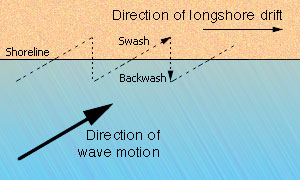 Longshore drift When waves arrive at the shore obliquely, the swash carries sand diagonally up the beach, but the backwash carries it straight down the slope. The result is a longshore drift which carries sand along the beach.
Longshore drift When waves arrive at the shore obliquely, the swash carries sand diagonally up the beach, but the backwash carries it straight down the slope. The result is a longshore drift which carries sand along the beach.
If a wave approaches the shore obliquely, the swash still carries the sand up the beach in the direction the wave was traveling, but that is now diagonally up the beach. As before, though, gravity causes the backwash to flow directly down the slope. The result is that a small amount of sand has been displaced along the shore. This sequence is repeated with each wave and, with time, a large amount of sand moves along the shore.
This is the process that moves sand from the creek mouths to the adjacent beaches and this is the process that builds the sandy points. This does not answer the question about the distribution of sand along a particular beach. That depends upon the climatology of the waves, which in turn depends upon both winds and the bathymetry of the Lake. These are topics which may be explored anon.
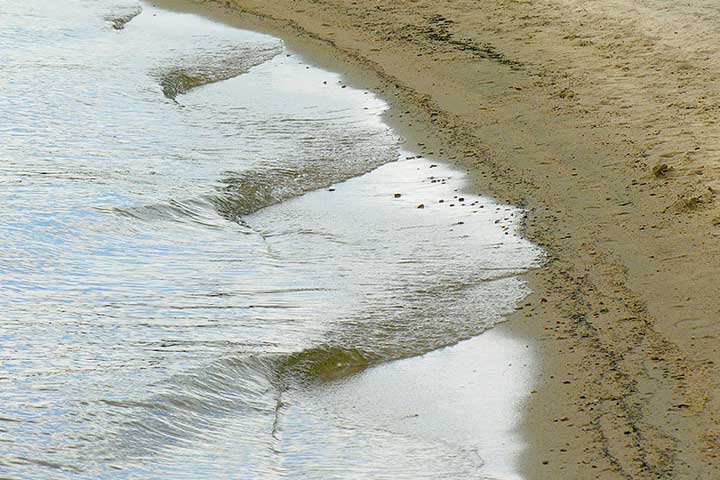 Gentle waves move along the beach from the upper left to the lower right. Even these small waves will move sand vigourously along the shore.
Gentle waves move along the beach from the upper left to the lower right. Even these small waves will move sand vigourously along the shore.
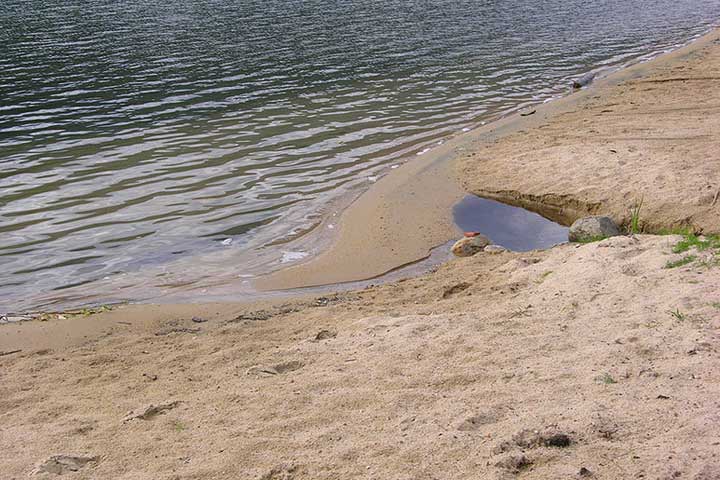 Longshore drift has built a spit across the mouth of the little creek which flows into the Lake from the right.
Longshore drift has built a spit across the mouth of the little creek which flows into the Lake from the right.
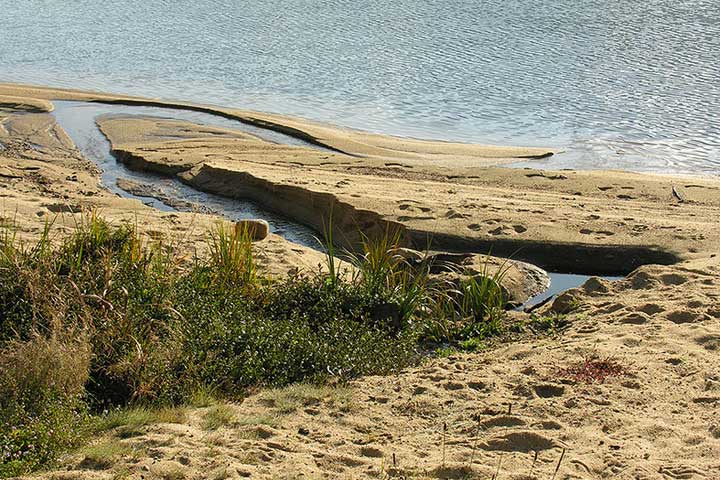 Waves don’t always approach a beach from the same direction. This is the same little creek as in the picture to the left (but seen from the other side). At first waves from the right transported sand to the left, but then as the lake level dropped, the wave direction shifted and the spit built to the right. The sinuous path of the creek is a result of the longshore drift changing with the wind.
Waves don’t always approach a beach from the same direction. This is the same little creek as in the picture to the left (but seen from the other side). At first waves from the right transported sand to the left, but then as the lake level dropped, the wave direction shifted and the spit built to the right. The sinuous path of the creek is a result of the longshore drift changing with the wind.
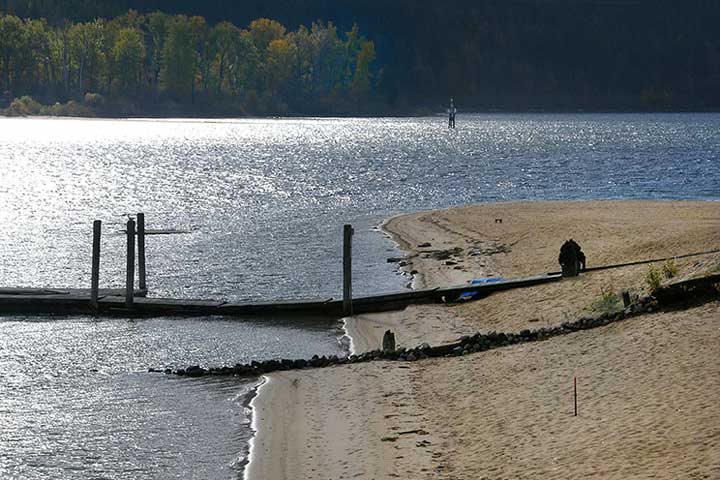 Groynes impede longshore drift such that sand builds up on one side and is depleted from the other. This is a view of Willow Point with the Five-mile dolphin and Troup in the background. The rock wall and the ramp both block sand flowing toward the point and so produce a zigzagged shoreline.
Groynes impede longshore drift such that sand builds up on one side and is depleted from the other. This is a view of Willow Point with the Five-mile dolphin and Troup in the background. The rock wall and the ramp both block sand flowing toward the point and so produce a zigzagged shoreline.
![]()